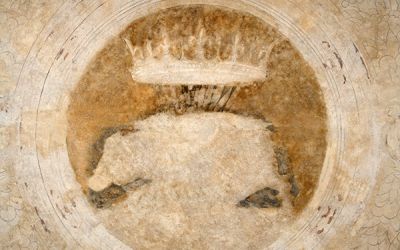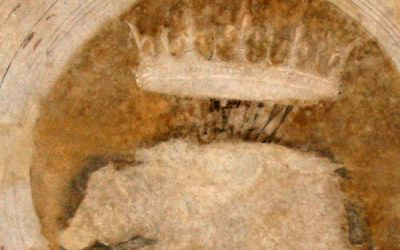The first room after the loggia is that of the Porcupine. Like all the ground floor rooms, it was intended to accommodate the distinguished guests of the marchese. The decoration has a specific scheme which features in many of the rooms in the palazzo. At the centre of the cloister vault is an emblem known as a device. The same device is then repeated, alternating with others, in the lunettes at the top of the walls. Now barely visible, the device that gives its name to this room is that of the crowned Porcupine or Hedgehog. It was the emblem of Louis XII of France, who used it with the motto COMINUS ET EMINUS, from near and from far, to indicate he knew how to defend himself, like the porcupine that wounds those nearby but is also able to launch its quills a long way off.
Devices are emblematic images formed by a figure (called the body) and a motto (called the soul). The often cryptic meaning of the image and the language of the motto (Latin or other) made the device accessible only to a reduced circle of highly cultured people able to understand the hidden message.
Heraldic devices were much loved by the nobility as a way of recalling and expressing important values and illustrating significant events related to their life, or amorous secrets. Adopting a device and handing it down from father to son or giving it away to dear and faithful friends became fashionable at court and in humanistic circles during the Middle Ages and Renaissance. The many devices found in the decorations at the palazzo document fundamental aspects of the history of the Gonzaga, and Francesco II Gonzaga in particular.






